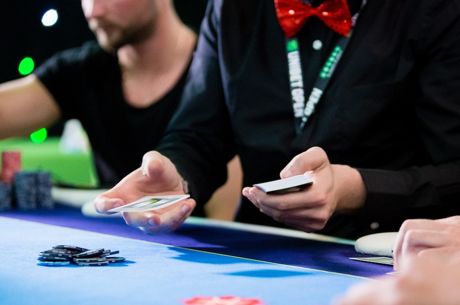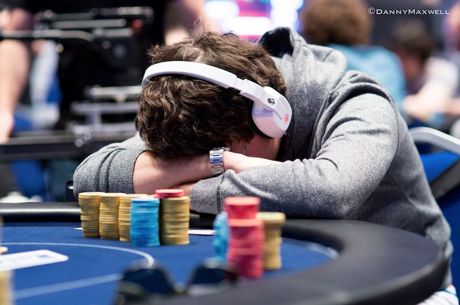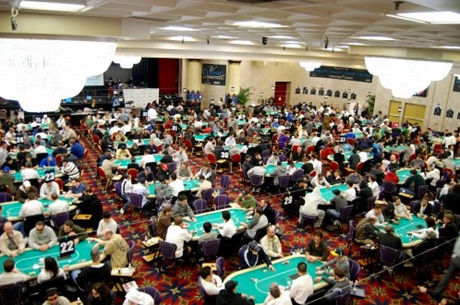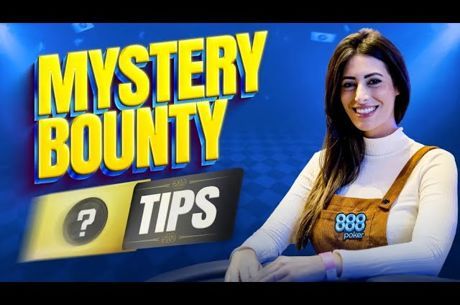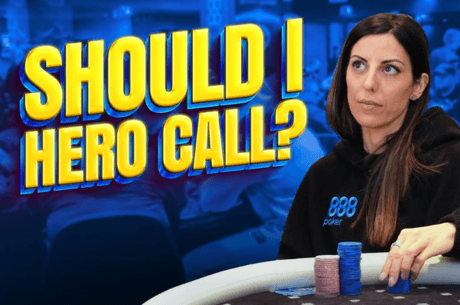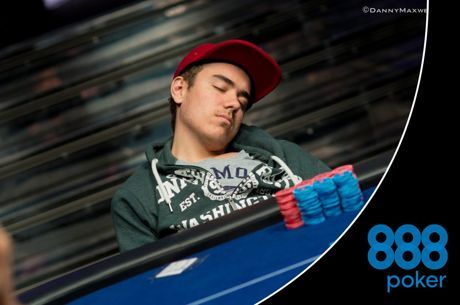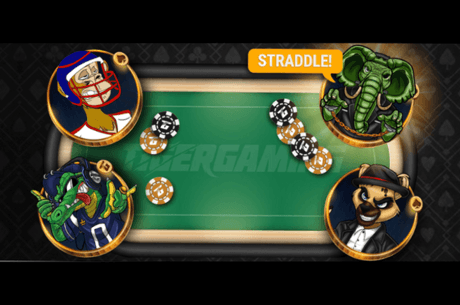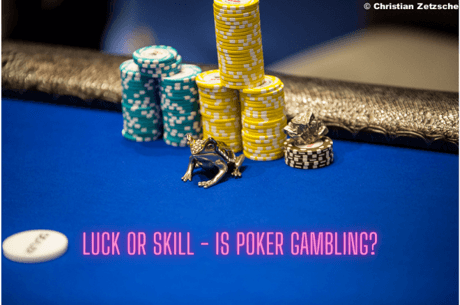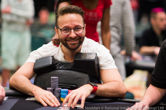Tommy Angelo Presents His New Book 'Painless Poker'
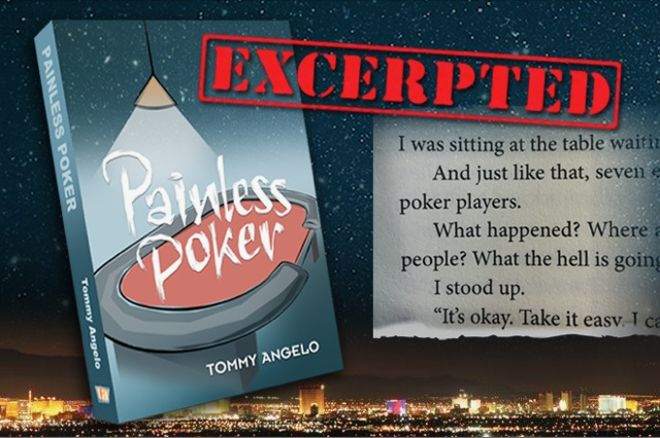
Poker coach, author, player and PokerNews contributor Tommy Angelo has a new book due out this month, following his earlier, well-regarded titles Elements of Poker and A Rubber Band Story and Other Poker Tales.
Angelo's new one, Painless Poker, is due out March 14. Recently he took the time to speak with us about the book as well as to share an early excerpt.
PokerNews: Talk first about that title — Painless Poker. What does that mean?
Tommy Angelo: I get a lot of different reactions to that title. One friend asked me if I was writing a comedy. Most people are like, "That’s not a possible thing."
The book is called Painless Poker because most of it takes place at a fictional place called the Painless Poker Clinic. What happens at the clinic is, I'm sitting there alone and seven archetypal poker players beam-in at their moment of greatest pain. Each of them has a story to tell about what they were doing at the moment they got beamed to the clinic.
Once they arrive, I teach a two-day seminar to them on how to reduce pain — both in poker and in life. Each of these characters was developed to represent all the various types of pain that we experience in poker. The two days of the clinic roughly mirrors the coaching program that I do with my clients that is several days' long. So you see the characters develop and grow.
So the book is kind of like a novel or fictional story, but it also gives poker advice.
That's right. What makes the book interesting, I think — both to read and for me to write — is that I'm writing in first person about me teaching this class, but all of it is made up. All the characters, all the stories, everything. They are based on experiences I've either had or witnessed others having, or that any of us can imagine poker players having, but they are all invented. It's like any other fiction, where none of it is true, but it's still full of truth. Or at least my best shot at it.
I think it turned out to be an effective venue for expressing all the ideas that I've learned on the topic of painless poker during my years of coaching, and from my own experiences with pain as a player.
Why did you decide to write Painless Poker?
What I'm hoping the reader will get out of this book is some combination of entertainment and value. As a writer, my primary emphasis was on writing a book that was readable, enjoyable to read and entertaining. As a teacher, my goal was to include information and insights that people might not have thought of before, that will help them reduce the stress and anxiety they have around issues concerning poker, and with everyday life.
One of the things I work on with my clients is meditation and mindfulness, and that also happens at the clinic near the end. We talk about everything from actual poker and strategy — we sit and play poker — and there's also discussion of using mindfulness techniques as a way to improve our poker score and just make life easier.
It's interesting to think about that idea of that one moment of greatest pain — the moment that brings each of the players to the Painless Poker Clinic. Every poker player probably has that sort of moment in their experience, one they instantly think about...
I'm glad to hear that... in fact, everyone does have their own "beam-in" story. Here's a trailer for the book that tells three of the beam-in stories:
And that really is the purpose of the beam-in story concept — that it's relatable. It seems like every poker player has their own moment of greatest pain they remember.
An excerpt from Painless Poker:
My next big blind I got ace-king again. Three players folded and the action was on Mick. Mick looked at his cards, looked at my blind, and bet a quick $80 with four black chips.
The other players folded. And then there were two.
I called the $60 more. The flop came with no big cards, giving me no pair and no draw, and no interest in pretending otherwise. I checked and Mick bet fast and I folded fast. Mick turned over his cards, but I didn't bother to look at them.
Andy scolded Mick. "Don't show him a bluff, you dummy. He might start calling us down."
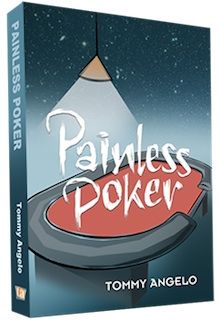
"I kind of doubt it," Mick said. "He's not what you'd call a reader. He can't even tell when one of the suckers who paid him for coaching thinks he got totally screwed."
"Are you talking about you?" Andy said. "Did you pay Tommy for lessons?"
This is Andy's idea of a really good time.
Mick pulled his hood off fast. His hair was short, way shorter than before. A buzz cut, I'd guess #5. His skull had a good shape to it.
"No way!" Mick said. "I was force-fed, at the clinic."
"At the what?" Andy said.
And off came the sunglasses. Mick aimed his pale blue eyes at Andy. Then at me for an uncomfortable three seconds.
"Never mind," Mick said to Andy. "Just forget I said anything."
Well, that was surely not going to happen.
Ten hands later I got pocket queens on my small blind. Mick opened for $80 and everyone folded to me. I made it $260. The big blind folded and Mick called the $180 more. We were heads up going into the flop. Mick had his sunglasses and hood back on. I palmed four white chips.
The flop came Q-7-4, rainbow. I had the nuts with a set of queens. I dropped my chips into play, thus deploying a bit of sophistostrategy I latched onto long ago: Seeing as I have to bet the flop many times with crap, I'll be damned if I'm going to check when I finally flop huge.
"$400 is the bet," said the dealer.
Mick called quickly, using four white chips as well.
What could get us all-in?
He could have 77 or 44, or a straight draw.
Or AA or KK. How could I get those hands to commit?
Just watch out for straights. 65 is your prime danger, plus some gutshots if he
started with a one-gapper.
The turn card was a deuce. I still had the nuts. So I bet out again.
"$800 is the bet."
Mick did the tiniest hitch. During which he changed his mind. I saw the whole thing. Then he called my $800 bet, using two stacks of $20 chips, slid out slowly.
What did he change his mind from? Had Mick's first instinct been to raise? Or to fold?
He was going to fold.
How do you know?
Because if his first instinct was to raise, then the deuce must have improved his hand,
and the only thing it could improve him to is two pair.
Or possibly trip deuces if he floated the flop with 22.
True. The point is that if he did start with Q2, 72, 42, or 22, then a 2 on the turn wouldn't
make him hitch, because that's what he'd be hoping for.
Here's what really happened. The thought in Mick's mind when he called the flop was the
classic, "If I hit the turn, I've got him. If I miss the turn and he bets again, the math will
make me fold."
Mick hitched because he was prepared to fold if he missed, and he did miss. He missed
what he was aiming for. But he also picked up more outs, enough to turn a fold into a call.
It just took him a split second to see it. Hence the hitch before he called.
You're right. The story is complete. So, what does he have?
The stacks were right for him to call on the flop with a gutshot, planning to fold
the turn if he missed. Then the deuce gave him four more outs, so he called the turn.
And with this board, Q-7-4-2, there is only one holding for which that is true: 53.
Correct. He has 53.
The future was determined. If an ace or six came on the river, I would check, Mick would bet his straight, and I would fold my three queens and think hey, good for him, he got there.
The river was a six. I checked, Mick bet $1,000, and I folded, as scripted.
Good for you, Mick. Not that it matters, but I would have played it the same, except for the hitch.

World-class coach and author, Tommy Angelo is considered a modern master of poker's mental game, and has helped pros and rec players alike achieve less tilt and more focus. Called "the seminal poker text of the 21st century" by The London Times, Angelo's Elements of Poker has revolutionized how serious players approach the game. His latest book, Painless Poker, already a bestseller, can be found on Amazon.com. Connect with Tommy on Twitter @TheTommyAngelo, and visit his website: tommyangelo.com.

